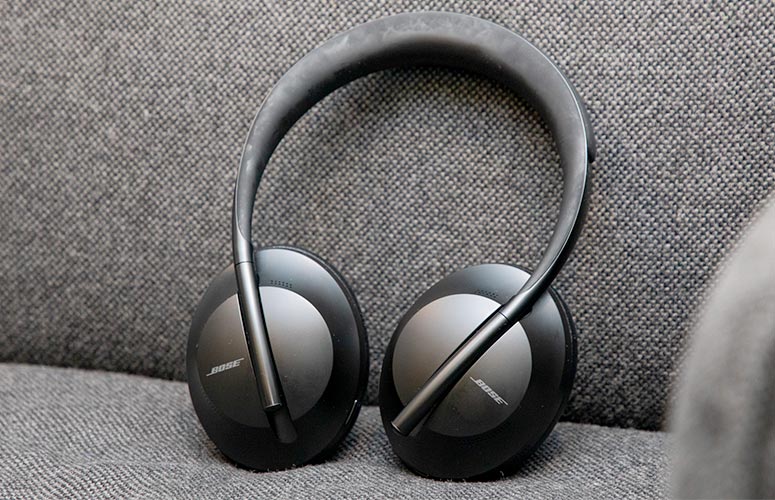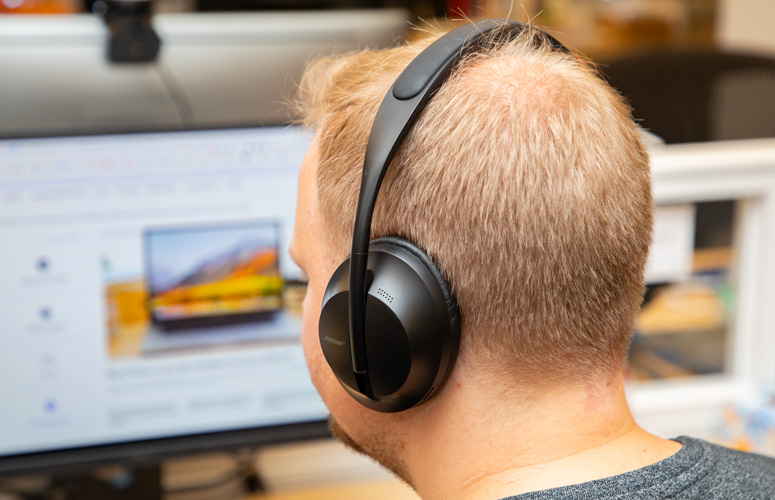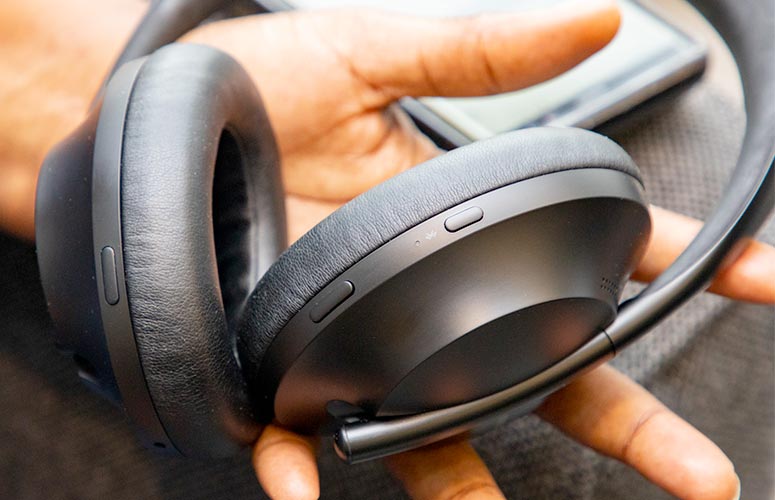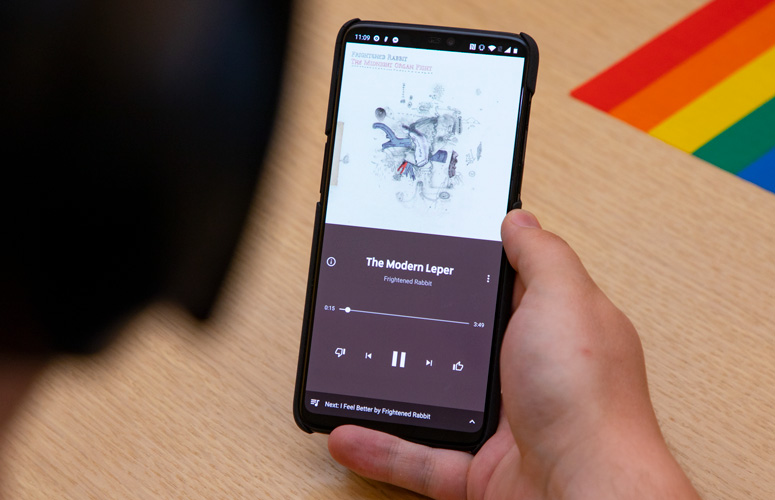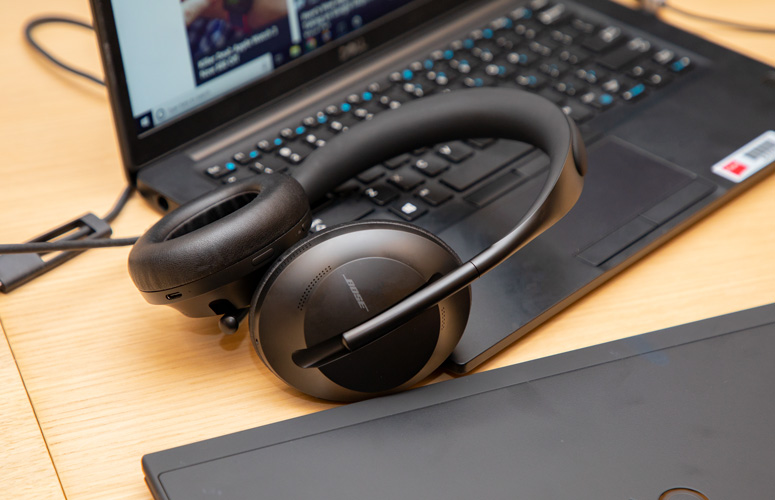Laptop Mag Verdict
Bose's Noise Cancelling Headphones 700 have a sleek design, excellent noise cancellation and best-in-class voice calls.
Pros
- +
Detailed, accurate sound
- +
Impressive noise cancellation
- +
Best-in-class voice calls
- +
Sleek, low-profile design
- +
Responsive touch controls
- +
Comfortable
Cons
- -
Pricey
- -
No EQ controls
- -
Ear cups rotate outward
Why you can trust Laptop Mag
Bose's Noise Cancelling Headphones 700 are the perfect example of why competition is a great thing for consumers. After coasting along for years with the only noise-cancelling headphones worth buying, Bose has been forced to reinvent itself to make sure Sony, Sennheiser and others don't gain ground.
At $400, the 700s aren't trying to undercut the competition. Instead, Bose's new headphones stand out with a sleek redesign, a slew of useful features and improvements to noise cancellation (for calls and music) and audio quality. All things considered (including their hefty price), the 700s are a definite upgrade over Bose's QuietComfort 35 II headphones and the best noise-cancelling headphones you can buy today.
Bose Noise Cancelling Headphones 700 Price and Availability
Bose's Noise Cancelling Headphones 700 cost $399, or $50 more than the QC35 II and top rival Sony WH-1000XM3. You can pick up a pair at most major U.S. retailers, including Best Buy, Amazon and B & H Photo Video.
What's in the Box?
Bose ships the 700 headphones with a faux-leather carrying case that offers plenty of protection for these pricey headphones.An interior compartment hidden under a magnet flap neatly holds a USB Type-A to USB Type-C charging cord and a 3.5-millimeter to 2.5-mm audio jack.
Design
Sign up to receive The Snapshot, a free special dispatch from Laptop Mag, in your inbox.
With slender cylindrical arms and a low-profile, matte-black casing, the 700s look like a futuristic invention you'd see in a sci-fi movie. I hope the headphones' clean exterior, highlighted by soft-touch finishes and subtle, sexy curves, will be a model for future headphones.
I didn't appreciate how sleek the 700s were until I put them next to Sony's WH-1000XM3s. Sony's acclaimed noise-cancelling headphones look downright clunky next to Bose's latest offering. There's a certain daintiness to the Bose 700s that won't appeal to everyone, but I'd still argue that the Bose 700s are the most stylish over-ear headphones around.
I hope the headphones' clean exterior, highlighted by soft-touch finishes and subtle, sexy curves, will be a model for future headphones.
Bose's 700s get high marks for form, but it drops a few letter grades for function. The 700's ear cups rotate, but the new hinge design is rigid, so the headphones don't fold up. As a result, the Bose 700's case is slightly wider and taller than that of the foldable WH-1000XM3 headphones.
I'm also mystified as to why the 700s' ear cups rotate outward. Yes, it helps them fit in the case, but when you're wearing the headphones around your neck, you want the flat, soft earpads to press against your collarbone, not the headphones' hard plastic exterior. To make matters worse, I accidentally pressed the touch controls and turned on my audio every time I wore the headphones with the ear cups facing outward.
Once you get your hands on these headphones, you'll understand why they cost so much.
To adjust the headphones' fit, just slide the ear cups up and down the immobile band. A groove in the ear cups grips the band snugly as you move it to your desired height. It's a unique and elegant mechanism, although I don't find it functionally better than a traditional band extender.
MORE: Best Wireless Headphones - Bluetooth Earbuds and In-Ear ...
The 700's regal aesthetic does only so much justice to the subtle luxuries Bose brought to its latest offering. Once you get your hands on these headphones, you'll understand why they cost so much. On top of the slim band is a cushy, soft-touch pad that mirrors the soft-touch plastic underneath. Leatherette ear pads provide excellent comfort (see below), while large L and R indicators printed on the inside of the ear cups leave no doubt about how to wear them.
Comfort
With a featherweight frame and cushy, leatherette ear pads, the Bose Noise Cancelling Headphones 700 are supremely comfortable. I've now been listening to them continuously for the past 4 hours and don't feel any irritation.
Instead of warmth around my ears or pressure on my head -- the first signs of uncomfortable headphones -- I simply forget the Bose 700 headphones are there during long listening sessions. That's thanks in large part to the supersoft foam Bose uses in the ear cups and the underside of the soft-touch headband. The earpads are also large enough so that most people's ears won't brush against the edges.
As comfortable as the 700s are, Bose had to make some compromises in order to craft such a sleek pair of headphones. Compared to the WH-1000XM3, the 700's ear cups don't give your ears as much room to breathe.
I also found that the ear cups clamped on the side of my head with more force than the Sonys, creating slightly more pressure. And at 9 ounces, the Bose 700s, while lighter than the Sony WH-1000XM3 headphones (9.7 ounces), are heavier than the clunkier QuietComfort 35 II (8.3 ounces).
Controls
You can operate the 700s through both physical controls and touch gestures. On the rear of the right ear cup is a power/Bluetooth pairing button above a voice assistant button, while an adjustable noise-cancellation button adorns the left side.
The buttons are slightly raised and easy to press, though perhaps a bit too easy, since I found myself accidentally adjusting the noise-cancellation levels when I removed the headphones. It's a little thing, but I really like that the 700s turn off with a single press of a button, not a long-press like the Sonys.
A touch panel on the front half of the right ear cup lets you easily adjust media playback, volume and call functions. The touch panel is very sensitive and, as a result, I never had to repeat a gesture to complete an action. Double taps quickly paused and played audio, while left and right swipes moved the track forward or backward without fault. I was even able to control the volume of the song I was listening to on a Windows laptop by swiping up and down.
MORE: RIP Headphone Jack: How the Industry Created and Killed the ...
Lots of people aren't fans of touch-sensitive controls, but I love what Bose did with the 700s, smartly assigning the oft-used music playback controls to touch gestures, while giving major, but not as frequently employed, functions their own physical buttons.
Bose Music App
The Bose Music app lets you adjust the 700's noise-cancellation levels, access Amazon Alexa or Google Assistant and customize your voice settings.
The app has a sleek interface and all of the basic features most users will need. I had no problems reassigning the left button to different noise-cancelling levels (the default levels are 0, 5 and 10) and changing the default voice assistant from Google Assistant to Alexa.
The annoying voice prompts that frequently disrupted my music were disabled with a few taps, and I even adjusted how much I could hear myself on a call. I often forget to manually turn off my headphones, so the auto-off settings were especially useful, although I wish you could manually choose a time instead of picking from a list of six options. I'm also bummed that you can't hear the battery-life prompts when you disable the built-in assistant.
There's something to be said for the simplicity of Bose's free app (available on Google Play for Android and the Apple App Store). However, those who like to customize their headphones will find its features to be sparse. There are no EQ settings or preset audio modes for adjusting how the headphones sound, and the find-my-headphones feature is also missing.
Noise Cancelling
Bose reigned as the king of noise cancellation until Sony barged in with its WH-1000X headphones in 2016. With improvements to both noise cancellation and voice isolation, the 700s help Bose regain its place at the top.
Noise cancellation on the 700s is adjustable on a scale of 0 to 10. At level 10, the 700s block all ambient sounds and most other noises. I could faintly hear the squeal of the aging F train and the voices of some two dozen passengers on my subway commute from Brooklyn to Manhattan, but ambient sounds were drowned out, which allowed me to read the sci-fi novel Wool in almost complete silence.
I didn't fully appreciate the 700's adept noise-cancelling capabilities until I took off the headphones and was greeted with the piercing screech of train wheels against rails in desperate need of repair. The effect was jarring.
MORE: Bose 700 Review: The New Noise-Cancelling King | Tom's Guide
My walk from Times Square to work was also more relaxing than I ever imagined possible. The exclamations of eager tourists in the morning were reduced to a barely audible hush as I comfortably listened to acoustic music at 50% volume.
I dialed the noise cancelling down to 0, or what Bose calls "full transparency mode," after I exited the walking zone and was able to hear my surroundings with almost as much clarity as if I hadn't been wearing the headphones.
Doing so meant my ears were bombarded with the sounds of honking taxis, but the ability to quickly dial down the noise cancellation is useful in cities or at the office when you're switching between talking to co-workers and listening to tunes.
Voice Assistants
Google Assistant, Amazon Alexa or Apple's Siri -- no matter which voice assistant you use, the Bose 700 supports it. Alexa is built into the headphones, while Siri and Google Assistant are activated independently, depending on your smartphone OS. Unfortunately, Cortana awoke briefly but was inoperable when I tried using the Windows voice assistant on my PC.
Pressing the voice assistant button on the right ear cup launched the Google Assistant on my OnePlus 6, the default device assistant for Android phones. From the Bose app, I switched from the default device assistant to a more useful Google Assistant option.
This let me configure the Google Assistant to tell the time and read my latest notifications (texts, emails and Facebook Messenger messages) through the headphones. I also had the option to use Amazon Alexa.
Audio Quality
Look past all those features and at the heart of the 700s is finely tuned audio with plenty of detail and crisp mids. Keep in mind that the 700s are tuned in typical Bose fashion, which means the bass won't slam you in the face and the treble is rounded off. That being said, I no longer have the same appreciation for my own 1000XM3 headphones after comparing them to the Bose 700s.
Chance The Rapper's unlikely collaboration with Death Cab for Cutie, "Do You Remember," sounded airier on the Bose 700s than it did on the WH-1000XM3s, while the Sony gave the hip-hop track a fullness that brought out the thumping drum rhythm but slightly obscured Ben Gibbard's delicate falsetto. I personally prefer the 700s for this track, but bassheads should opt for the Sonys.
Coldplay's "The Scientist" also sounded cleaner on the Bose, especially when the drums and bass guitar arrived midway through the song; whereas their entrance nearly overwhelmed the vocals on the Sony headphones.
The drums and cymbal hits were incredibly clear when I listened to Thrice's "A Better Bridge" on the Bose 700s. Dustin Kensrue's husky voice rose above the sharp electric guitar. Again, the 1000XM3s also sounded great, but their loose low end made the vocals sound muddy. Because of this, the soundstage on the Sonys felt congested, whereas the song was more spacious on the Bose headphones.
Overall, the WH-1000XM3s offer a more lively, weighty sound, but I prefer the clearer, more balanced presentation of the 700s.
Call Quality
As someone who is in a long-distance relationship, call quality is of the utmost importance to me, and it's the one thing I hate most about my WH-1000XM3s.
The 700s don't stop at besting Sony's with passable call quality. Rather, they set a new standard with vocal clarity that's far better than any headphones we've heard before.
Case in point: My fiancee's glowing endorsement when she first heard me speaking through the 700's mic, "You honestly sound better than you do when you use your smartphone."
The 700s don't stop at besting Sony's with passable call quality; rather, they set a new standard with vocal clarity that's far better than any headphones we've heard before.
She was right. When I gave one of my co-workers a call, it sounded like he was speaking to me in a soundproof room, not surrounded by chatty colleagues.
Bose achieves this with a four-microphone system that captures your voice, then isolates it by cancelling out the sounds around you. It's a bit of brilliance that will be appreciated by business users -- Bose's main target customers -- who are on trips or working remotely out of loud public spaces, like a coffee shop.
Battery Life, USB Type-C Charging and Bluetooth
The 700's 20 hours of battery life is good, but not great. You should easily make it through multiple days at the office on a charge, but be sure to plug them in before you take the 700s on a long international flight.
My colleague, Sherri L. Smith, didn't have to charge the 700s for eight days after listening every day for at least 2 hours a week at 75% volume. At 20% battery life, she was informed that the headphones had 3 hours of juice remaining. For comparison, the QC 35 II headphones get the same 20 hours of runtime, while the MX1000XM3s last 30 hours on a charge with noise cancelling turned on.
MORE: Best Headphones - Top Earbuds and Headphones
One advantage the 700s have over the QC35 IIs is that they charge via a USB Type-C port on the underside of the right ear cup. Bose claims that the headphones will charge to 100% in less than 2.5 hours, and that with quick charging, you can get 3.5 hours of listening time in just 15 minutes.
The Bose 700s use the latest Bluetooth 5.0 standard, which promises 33 feet of range. I listened to music from the other side of the office without any disruption. However, the signal started cutting out once I turned a corner and put a wall between the 700s and my OnePlus 6. Eventually, the music went silent and the headphones beeped, telling me I had lost the connection altogether.
Bottom Line
The Bose Noise Cancelling Headphones 700s are the best wireless noise-cancelling headphones you can buy. Improved in almost every way over its predecessor, the 700s are worth the extra $50 you'll spend over the QC35 IIs. The 700s' exceptional noise cancellation and voice calls are especially great for business users working from an airplane seat or coffee house. And few people will have complaints about the headphone's clear, balanced audio.
The 700 headphones do have their quirks. For one, the Bose app lacks EQ controls, and while the new design looks great, it's easy to accidentally press the touch-capacitive buttons when they're around your neck because the ear cups rotate outward. Then there's the $400 price, which is higher than competitors', including the popular Sony WH-1000MX3s ($350). Still, the Bose 700s more than justify their price and are the best noise-cancelling headphones around for those who can afford them.
Credit: Laptop Mag
- 14 Cheap Headphones Ranked From Best To Worst
- I Spent More Than $200 on Headphones: You Should Too
- Buying Headphones in: Pros and Cons of Every Type
Bose Noise Cancelling Headphones 700 Specs
Phillip Tracy is the assistant managing editor at Laptop Mag where he reviews laptops, phones and other gadgets while covering the latest industry news. After graduating with a journalism degree from the University of Texas at Austin, Phillip became a tech reporter at the Daily Dot. There, he wrote reviews for a range of gadgets and covered everything from social media trends to cybersecurity. Prior to that, he wrote for RCR Wireless News covering 5G and IoT. When he's not tinkering with devices, you can find Phillip playing video games, reading, traveling or watching soccer.
